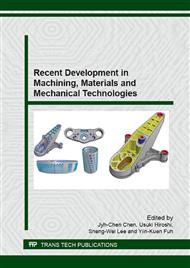p.113
p.119
p.124
p.129
p.136
p.142
p.151
p.158
p.164
The Thermal Image Analysis and Fuel Conversion Characteristics on Porous Media-Catalyst Hybrid Reactor in Dry Auto-Thermal Reforming
Abstract:
The subject was to design a fuel converter of CO2, focusing on parameters on thermal image observation of porous media-catalyst interface during excess enthalpy reforming process. The methodology was using auto-thermal reforming technique to provide the heat of oxidation reaction. The heat provided the needed high temperature during CO2 reduction processing. H2-rich syngas was produced by the assistance of surface reaction of catalyst. The experiments were performed by using visualization technique for thermal image observation during reforming process. The results could be applied to the understand the temperature distribution. This study covers two parts, including thermal image observation, and reactant conversion characteristics under various reforming parameters. The experimental results show that the hybrid reformer can achieve excess enthalpy condition under the tested parameters. Additionally, the optimal CH4 conversion efficiency can reach 93.28 %. CO2 conversion efficiency is reaching between 0.35 and 8.65 %. The thermal image observation technique to determine catalyst local high temperature of reforming process is important in academic and practical application. Moreover, it provided information for basic research during reforming process
Info:
Periodical:
Pages:
136-141
Citation:
Online since:
July 2015
Authors:
Keywords:
Price:
Сopyright:
© 2015 Trans Tech Publications Ltd. All Rights Reserved
Share:
Citation:


